 (Green Flower Media, 1/23/16, Pleasanton, CA. Presentation video here.)
(Green Flower Media, 1/23/16, Pleasanton, CA. Presentation video here.)Cannabinoid Integrative Health 101 -- prepared remarks for opening of 2016 Virtual Cannabis Health Summit
 (Green Flower Media, 1/23/16, Pleasanton, CA. Presentation video here.)
(Green Flower Media, 1/23/16, Pleasanton, CA. Presentation video here.)
I never really learned how to relax. Growing up in a small town in the 80s and 90s, I was often in a high strung environment at home and at school. At home, my immigrant father always had a propensity to be wound-up and tense--I’m sure partly related to his being raised mainly by my grandmother--a brave child refugee and orphaned sole survivor of her family after the bloody partition of India and Pakistan in 1947, when, while hiding under a train seat trying to flee, she was stabbed in an act of random religious violence, ultimately losing her kidney but thankfully not her life. At school, I was an ethnic and religious  ultraminority in the Buckle of the Bible belt and had to constantly be on guard against bullying, racist aggression, and being ostracized. I probably internalized much of this passed on tension and strife in my
ultraminority in the Buckle of the Bible belt and had to constantly be on guard against bullying, racist aggression, and being ostracized. I probably internalized much of this passed on tension and strife in my
 environment. To find peace, I remember reading books in my teens at home on Hindu and Buddhist spiritual philosophy and meditation techniques, but I was never able to quite find that calming center they described in my attempts to practice intentional breathing and still sitting.
environment. To find peace, I remember reading books in my teens at home on Hindu and Buddhist spiritual philosophy and meditation techniques, but I was never able to quite find that calming center they described in my attempts to practice intentional breathing and still sitting.
~/~
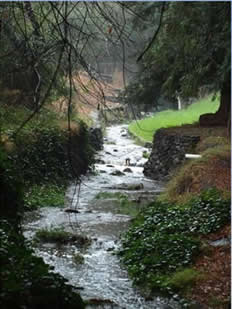 It wasn’t until years later that I finally felt what it was like to be eased from tension, relaxed, and calm, as I sat on the north bank of a small creek not far from here, on the night of the 11th of November, 1999, just listening to the sounds of running water, feeling an inner stillness and joyous peace come over me. I was at once alert andawake and attuned to my environment, and at the same time I was in blissful repose, present and at ease, not feeling like I was forgetting to do something else or had to be someplace else. In those precious moments, I flashbacked to the lessons of the mediation books I had read in my youth and realized this was just the kind of state they’d been talking about.
It wasn’t until years later that I finally felt what it was like to be eased from tension, relaxed, and calm, as I sat on the north bank of a small creek not far from here, on the night of the 11th of November, 1999, just listening to the sounds of running water, feeling an inner stillness and joyous peace come over me. I was at once alert andawake and attuned to my environment, and at the same time I was in blissful repose, present and at ease, not feeling like I was forgetting to do something else or had to be someplace else. In those precious moments, I flashbacked to the lessons of the mediation books I had read in my youth and realized this was just the kind of state they’d been talking about.
How had this wonderful grace happened? Well, in the preceding hours, for the first time in my life, I had inhaled several puffs of cannabis smoke at the invitation of my undergraduate philosophy club college chums. It was only after I had taken a solo stroll away from the stone picnic table where we’d gathered for one of our usual engaging conversations and sat down alone and attended to the running water that the instilling relaxation effect really manifested itself.
This experience was radically transformative. Not only were my inner vistas of peace opened for the first time, but my intellectual curiosity, as a student of science, into the how’s and why’s of what had happened to me, and to others who’d reported therapeutic effects, was piqued. Because truly, all I had known about cannabis up to that point was what I had learned in the structured educational system: that it was inherently dangerous and caused a ‘dumbing down’ of its users; yet here, and in subsequent experiences, it had enhanced the quality of my life by fostering psychological balance which made me a more well-rounded person and a better student. And this is to say nothing of the healing stories of medical marijuana patients whose voices I began paying attention to. Independently, I began exploring cannabis science papers, meeting with researchers, and the words ‘cannabinoid’ and ‘endocannabinoid’ entered my vocabulary and pharmacologic worldview.
~/~

Several years later, after experiencing a serious breach of trust and deadly and ruinous threats and theft related to cannabis without the ability to call police for help, my moral compass turned steadfastly towards social health justice, and I began to feel a strong sense of moral indignity at how people who were cultivating positive relationships with cannabis were still being treated as criminally deviant and thus vulnerable to victimization, not to mention the millions more who remained miseducated and deprived entirely of the possibility of relating positively to cannabis.
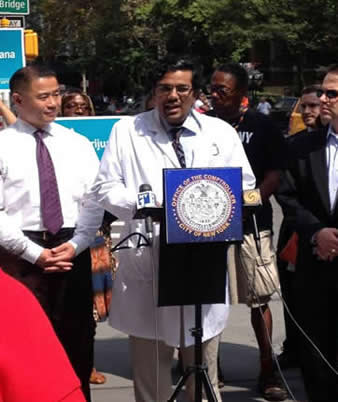
~/~
I resolved to ‘leverage my privilege’ and strive to make a difference by “coming out” about cannabis in my scholarly and medical work. This is a way to heal, to turn a ‘badge of shame and target for state oppression’ into a badge of courage.
I’m here today to tell you that there is a “marijuana drug fundamentalism” in society built on willful ignorance of cannabis and its effects that I wish to disrupt and do-away with, using the strongest tools for knowledge-making that we have--science and social science--and build in its place a legitimate new edifice that links cannabis and health in a natural understandable way that empowers you as it has me. This is cannabinoid integrative health science 101.
~/~
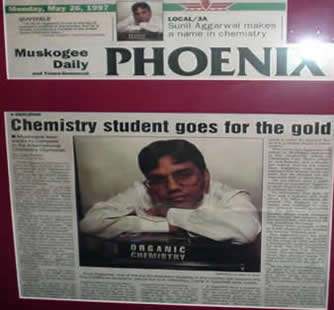
You may ask: what makes me credible? When I was growing up, the propaganda was (and still is) that cannabis enthusiasm was a surefire ticket to a life of underachievement, demotivation, and failure. So, to countermand this, to quote Dr. Albert Schweitzer, “I decided that I would make my life my argument.” At the end of high school, I qualified for the 20-member United States National Chemistry Olympiad Team. In college, I received the nationally competitive Goldwater Scholarship for science, did a semester study abroad at the University of Edinburgh in Europe, and graduated from Berkeley with: a Bachelors of Science in chemistry with high honors, a Bachelors of Arts in philosophy with distinction, and a minor in religious studies.
After college, I received a competitive Medical Scientist Training Program fellowship from the National Institutes of Health at the top-ranked University of Washington School of Medicine, and later a Graduate Research Fellowship from the National Science Foundation, which all combined provided me with a fully funded federal scholarship to medical and graduate schools. For my PhD dissertation in medical geography, I researched the geography of medical cannabis in Washington state, focusing on an interlinked group of 176 medical cannabis using patients, one patient-dispenser, and one specialist physician, using mapping, interviews, medical records review, and health surveys and dosing diaries of patients who all drew from one 32-ounce batch of Washington state locally cultivated
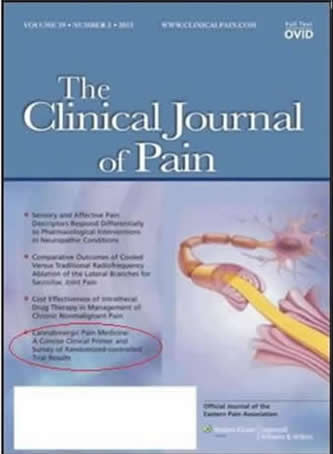 herbal cannabis. The research was all done under NIH-issued federal Certificates of Confidentiality, a first, which protected
herbal cannabis. The research was all done under NIH-issued federal Certificates of Confidentiality, a first, which protected
all subjects from federal law enforcement interference. I published the work in a series of 6 peer-reviewed articles, one of which has been translated into Spanish and cited 94 times according to Google Scholar, including by the United Nations World Drug Report and a standard college Psychology textbook, and another related article was featured on the cover of the Clinical Journal of Pain. I completed my medical residency at NYU where I was a finalist for 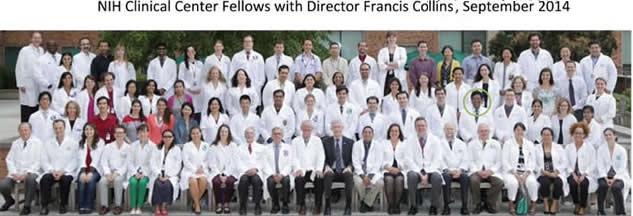 resident of the year, and I went on to do a clinical fellowship at the NIH Clinical Center, the world’s largest research hospital, where I helped revise the National Cancer Institute’s public information on cannabis and cannabinoids and was invited to speak on Cannabis and Pain at a US Congressional Black Caucus Health Conference, an invitation which was ‘declined on my behalf’ due to internal politics. Along the way, I successfully led the effort to get the AMA, the US’s oldest and largest medical association, to call in 2009 for a review of the classification of cannabis as medically useless in federal law, their first statement recognizing its medical utility and potential in 72 years. I am a board certified physician in Physical Medicine and Rehabilitation and board-eligible in Hospice and Palliative Medicine and am currently a practicing physician in Washington State. I am an affiliated faculty at the University of Washington and the MultiCare Institute for Research and Innovation, Vice-President of the Washington Physicians for Social Responsibility, and an Honorary Trustee of the Medicinal Cannabis Foundation of India.
resident of the year, and I went on to do a clinical fellowship at the NIH Clinical Center, the world’s largest research hospital, where I helped revise the National Cancer Institute’s public information on cannabis and cannabinoids and was invited to speak on Cannabis and Pain at a US Congressional Black Caucus Health Conference, an invitation which was ‘declined on my behalf’ due to internal politics. Along the way, I successfully led the effort to get the AMA, the US’s oldest and largest medical association, to call in 2009 for a review of the classification of cannabis as medically useless in federal law, their first statement recognizing its medical utility and potential in 72 years. I am a board certified physician in Physical Medicine and Rehabilitation and board-eligible in Hospice and Palliative Medicine and am currently a practicing physician in Washington State. I am an affiliated faculty at the University of Washington and the MultiCare Institute for Research and Innovation, Vice-President of the Washington Physicians for Social Responsibility, and an Honorary Trustee of the Medicinal Cannabis Foundation of India.
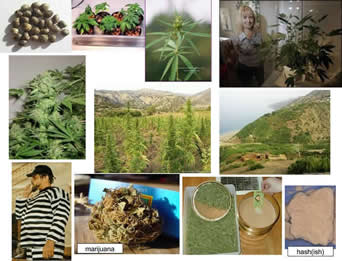
~/~
So, now, let’s start with the basics: where does cannabis come from, what is it made of, and what has it taught us about ourselves and our health? First things first: let’s ‘unlearn’ what governments have long propagandized and fooled people into believing that cannabis, referred to with that foreign-sounding name ‘marijuana’, is an invasive, “illegal” alien threat that does not belong here, and needs to be monopolized away from the commons out of our reach for our own good. Let’s instead re-integrate the plant cannabis back into our sense of the naturally evolved web of life on planet Earth, of which we are a part. Cannabis is an advanced, wind-pollinated plant which comes in two sexes, male and female (and occasionally hermaphrodites) which evolved around 38 million years ago somewhere in Central-Southern Asia. One theory of how some of the key chemical compounds came to be so abundant in ancestral cannabis plant flowers is that they evolved as a protective response to increasing UV radiation from the sun that they were exposed to in their native habitat as they rose to higher and higher elevations during the massive geological uplift that began 50 million years ago when the Indian subcontinent began to collide with the Asian landmass, creating the Himalayas, the world’s tallest
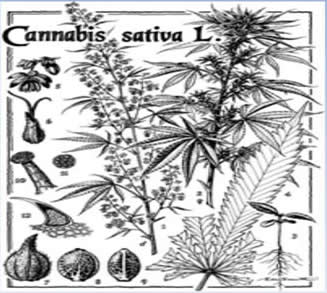 mountain range. Archeological evidence suggests that this wild cannabis plant (which still grows wild abundantly in these parts), was domesticated in South Asia as early as 18 thousand years ago. Its use as a medicinal agent quote “known for 1,000 years” is recorded in the Government of India’s traditional knowledge digital library to protect it and medical knowledge of its many uses from international biopiracy. Not only that, but Cannabis use as an aid in spiritual development, such as meditation, has been part of Indian religious traditions dating back thousands of years and cannabis remains consecrated and closely associated with certain deities and saints. This is to say nothing of the social integration of cannabis into many other ancient societies and worldviews in China and other parts of Asia, the Middle East, Africa, and later in various European sects.
mountain range. Archeological evidence suggests that this wild cannabis plant (which still grows wild abundantly in these parts), was domesticated in South Asia as early as 18 thousand years ago. Its use as a medicinal agent quote “known for 1,000 years” is recorded in the Government of India’s traditional knowledge digital library to protect it and medical knowledge of its many uses from international biopiracy. Not only that, but Cannabis use as an aid in spiritual development, such as meditation, has been part of Indian religious traditions dating back thousands of years and cannabis remains consecrated and closely associated with certain deities and saints. This is to say nothing of the social integration of cannabis into many other ancient societies and worldviews in China and other parts of Asia, the Middle East, Africa, and later in various European sects.
~/~
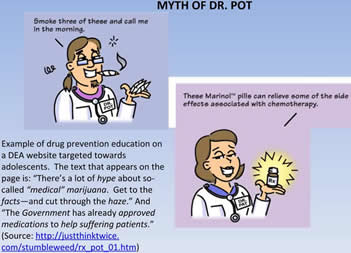
Second, let’s also unlearn that whole plant herbal cannabis medicinal use and experimentation is the business of unscientific quacks and know-nothing charlatans, as the DEA would have us believe in the “Dr. Pot” propaganda they have distributed to school-going youth in recent years.
~/~
In actual fact, the history of cannabis in Western science and medicine is pretty striking, and we owe our modern understanding of cannabis as an end-of-life palliative, pain, spasm, and convulsion-relieving compound to Sir Dr. William O’Shaughnessy, a brilliant Irish scientist, physician, and educator virtually no one has heard of, who as a medical student helped to define the life-saving electrolyte hydration treatment of cholera victims. He was an early proponent of integrative medicine, learning from local healers, and his writings and work on cannabis from India in the 1830s, helped to bring it into the medical mainstream where it was looked upon quite favorably for use in painful menstrual disorders and neurological disorders such as migraine, spasms, Parkinson’s, dementia and epilepsy, touted by some of the great physicians of the 19th and 20th centuries, such as Sir Dr. William Osler, the father of internal medicine and co-founder of Johns Hopkins, Sir Dr. William Gowers, who first started checking hemoglobin levels in patients and commonly utilizing an ophthalmoscope to peer into the retina, and Sir Dr. J. Russell Reynolds, who laid the groundwork for our modern understanding of epilepsy and was Queen Victoria’s personal physician. Even 200 years before their time, the legendary scientist
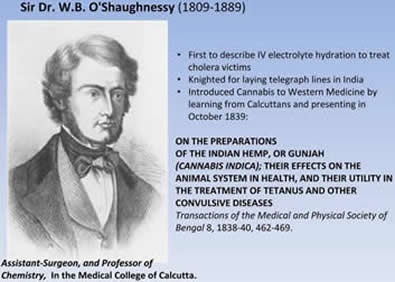
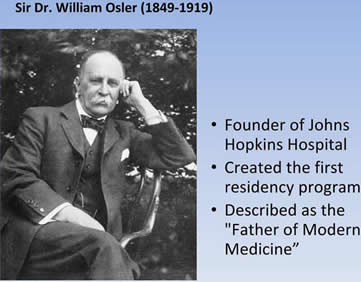
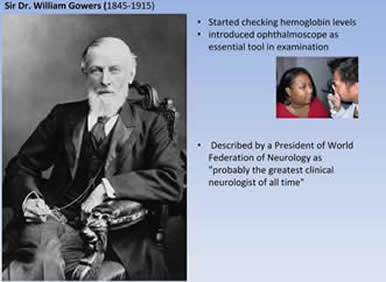
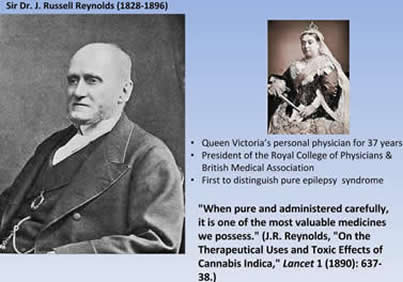
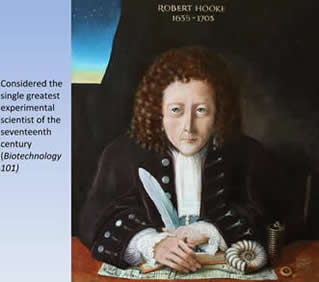
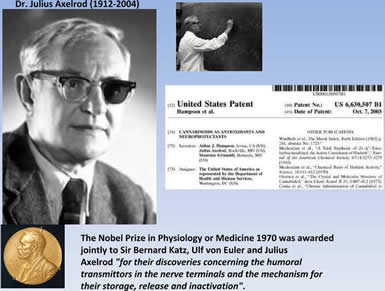
Robert Hooke, who invented the reflecting microscope and described “plant cells” for the first time, grew and self-experimented with cannabis and described its salutary effects. Knowing this history, it should not surprise us to learn that one of the final projects in the early 2000s of the late Nobel Laureate in Medicine Dr. Julius Axelrold, famous for his fundamental discoveries on how adrenaline and dopamine are produced, stored, and used in our bodies, was on the use of cannabis compounds as powerful antioxidants and protectants of the brain from damage due to injury, stroke, and diseases such as Alzheimer's. He felt this to be so valuable that he co-patented the idea for the government. Knowing all this allows us to integrate cannabis into our collective geologic, cross-cultural, and hallowed science histories so that it will never again seem alien or marginal.
~/~
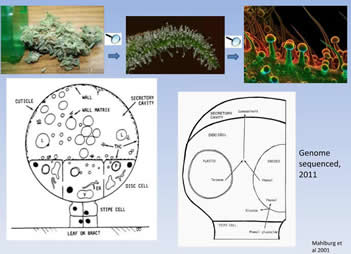
Third, what is the resin secreted by cannabis flowers made of? It is not an unsafe, medically obsolete “dangerous substance” as the current US and UN legal classifications paint it to be, which we know from recorded conversations and historic documents is a direct result of the bigoted, racist, corrupt science-suppressing politics of the prohibition architects Harry J Anslinger and Richard Milhous Nixon. Like maple trees make sap, cannabis female flowers make a sticky resin, produced biologically for the practical role of protection from the elements but also for the procreative role to help get wild male pollen blowing in the wind to stick to and fertilize females. In many domesticated settings, females are separated from males to optimize resin production. Cannabis resin is truly one of the great finds and wonders of nature. As The Economist magazine, which understands value, poetically wrote in 2006:
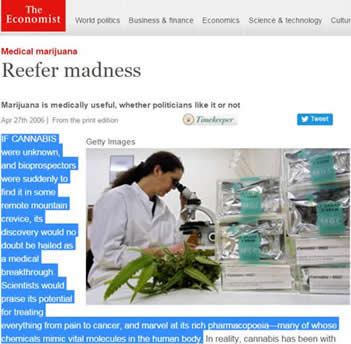
“IF CANNABIS were unknown, and bioprospectors were suddenly to find it in some remote mountain crevice, its discovery would no doubt be hailed as a medical breakthrough. Scientists would praise its potential for treating everything from pain to cancer, and marvel at its rich pharmacopoeia—many of whose chemicals mimic vital molecules in the human body.”
The resin is replete with therapeutically active compounds known as cannabinoids and terpenes. 111 cannabinoids and more than 200 terpenes and have been identified in cannabis, in varying percentages and ratios in different cultivars (in fact, there are more varietals of cannabis than there are species of dogs). In the consumption of cannabis resin, cannabinoids are absorbed simultaneously with terpenes creating what’s called ‘the entourage effect; which ends up increasing the effectiveness and tolerability of cannabinoids compared to when they are given in isolation.
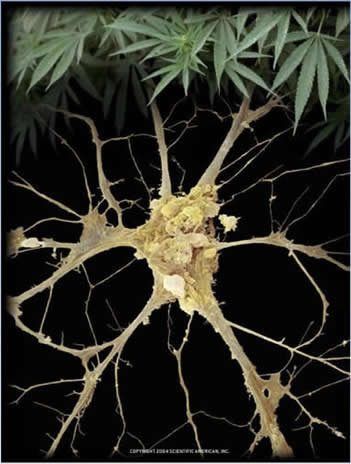 Now, here’s the rub--the really big deal that stands to revolutionize nearly every branch of medicine. Serious scientists around the globe, in studying the effects of cannabis on the body, discovered in the last decade of the 20th century, a whole new field of biology and physiology-- the science of cannabinoid signalling-- a phenomenon which has been integrally part of life itself for 600 million years. It was discovered over time by picking up a thread that began with finding a new widespread protein in our bodies that fits lock-and-key with a major cannabinoid in cannabis, and following that thread until it revealed a massive tapestry of DNA-encoded molecules working in unison, the endocannabinoid signalling system. Cannabinoid signalling, which is going on all of the time in many bodily tissues and organ systems, has major ramifications for our health, playing a key role in regulating mood, appetite, memory, inflammation, pain perception, muscle tone and movement, extinction of traumatic memories, protection of nerves and brain tissue, bone growth, tumor regulation, baby breastfeeding reward, stress management, eye pressure, gastrointestinal motility, seizure activity, and other areas of health. The endocannabinoid system is a molecular signalling network that plays a key role, like a symphony conductor--more of this signal, less of this signal, in maintaining healthy homeostasis and equilibrium in our bodies. There have been tens of thousands of scientific papers published on the ECS and over 8,000 human subjects have been part of published controlled clinical studies with cannabis and cannabinoids proving their effectiveness in treating real ailments, some of which you will hear about at this Summit. What’s remarkable is that compounds from cannabis resin when consumed are able to either gently hook directly into specific endocannabinoid receptors or indirectly increase the activity of the system, thereby helping us to treat symptoms such as chronic pain, anxiety, depressed mood, nausea, loss of appetite, and spasms. They can also lead to tamping down of inflammation, reduction of toxicity from excess release of neurotransmitters, quieting of seizures, and many other exciting possibilities such as controlling cancers, fighting infections, diabetes, and autoimmune diseases, and yes, learning how to relax.
Now, here’s the rub--the really big deal that stands to revolutionize nearly every branch of medicine. Serious scientists around the globe, in studying the effects of cannabis on the body, discovered in the last decade of the 20th century, a whole new field of biology and physiology-- the science of cannabinoid signalling-- a phenomenon which has been integrally part of life itself for 600 million years. It was discovered over time by picking up a thread that began with finding a new widespread protein in our bodies that fits lock-and-key with a major cannabinoid in cannabis, and following that thread until it revealed a massive tapestry of DNA-encoded molecules working in unison, the endocannabinoid signalling system. Cannabinoid signalling, which is going on all of the time in many bodily tissues and organ systems, has major ramifications for our health, playing a key role in regulating mood, appetite, memory, inflammation, pain perception, muscle tone and movement, extinction of traumatic memories, protection of nerves and brain tissue, bone growth, tumor regulation, baby breastfeeding reward, stress management, eye pressure, gastrointestinal motility, seizure activity, and other areas of health. The endocannabinoid system is a molecular signalling network that plays a key role, like a symphony conductor--more of this signal, less of this signal, in maintaining healthy homeostasis and equilibrium in our bodies. There have been tens of thousands of scientific papers published on the ECS and over 8,000 human subjects have been part of published controlled clinical studies with cannabis and cannabinoids proving their effectiveness in treating real ailments, some of which you will hear about at this Summit. What’s remarkable is that compounds from cannabis resin when consumed are able to either gently hook directly into specific endocannabinoid receptors or indirectly increase the activity of the system, thereby helping us to treat symptoms such as chronic pain, anxiety, depressed mood, nausea, loss of appetite, and spasms. They can also lead to tamping down of inflammation, reduction of toxicity from excess release of neurotransmitters, quieting of seizures, and many other exciting possibilities such as controlling cancers, fighting infections, diabetes, and autoimmune diseases, and yes, learning how to relax.
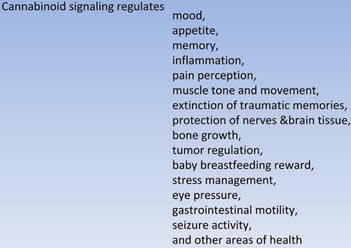
This cannabinoid science mechanistically explains why cannabis resin has therapeutic utilities that’ve been observed for millennia and shows that its use in the preservation, promotion, and restoration of health is scientifically sound and sustainable, as an organic, herbal, renewable, therapeutic cannabinoid delivery vehicle. We need more research to further our understanding of what types and how much of cannabis preparations are best for which conditions, desires, and individual chemistries.
In closing, let me stress again that the cannabis plant truly does belong to the global commonwealth of all peoples. I hope by learning about its deep history and its health potential, we would build better regulatory systems that respect and optimize the human-cannabis relationship, including our freedom to farm it, trade it, and share it, which is our birthright, as we move from criminalization to civilization, and stop discrediting and start crediting cannabis-knowledgeable folks. It is normal and okay to have an affinity and gravitate towards certain plants in our commons, and we can heal violence and injustice if we acknowledge that and integrate it into our understanding of who we are and what we care about in the world, especially in our health systems and our laws.